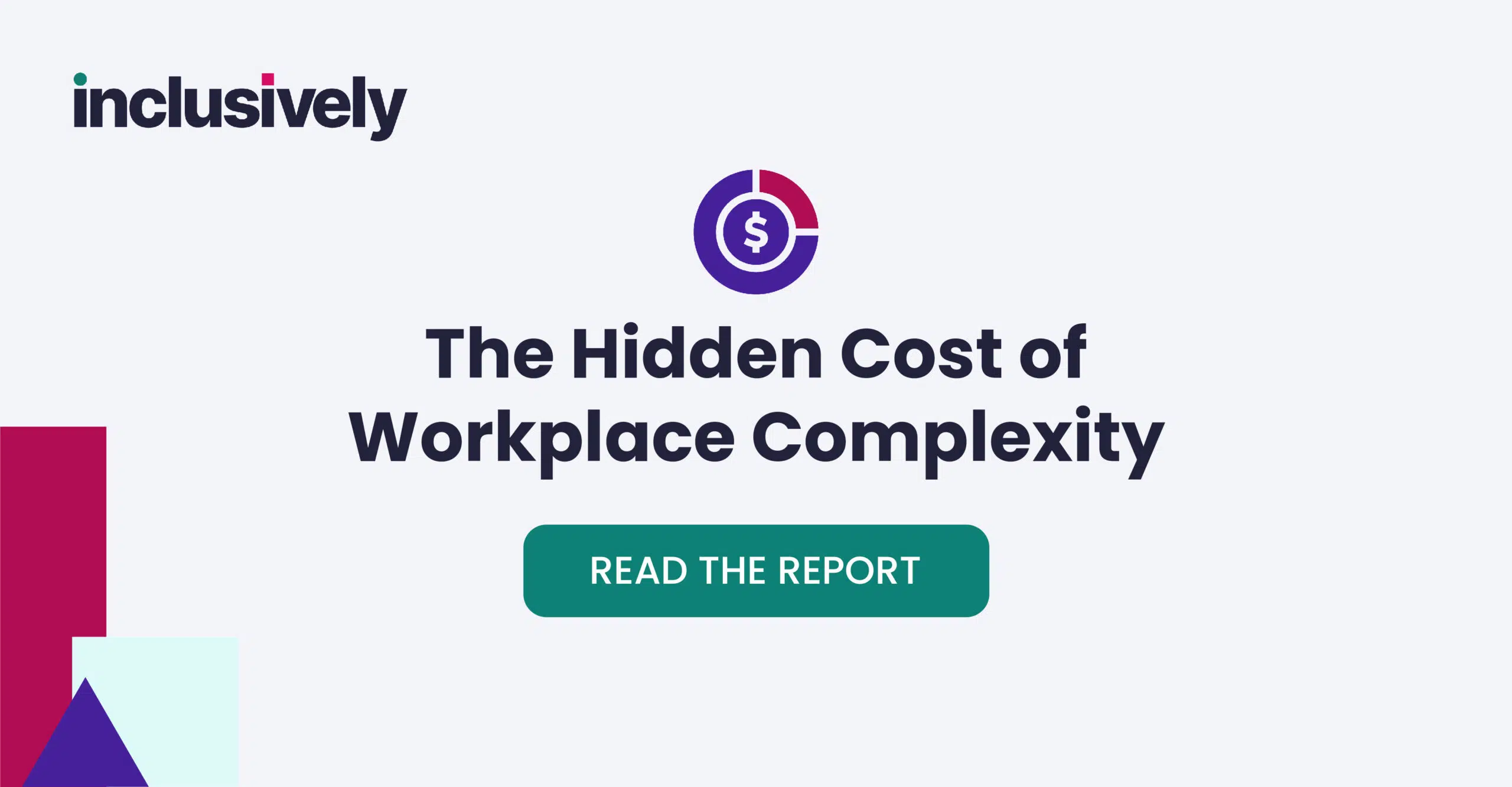Post-Traumatic Stress Disorder (PTSD) is a mental health condition that can develop after an individual experiences or witnesses a traumatic event. Characterized by symptoms like flashbacks, anxiety and mood changes, PTSD can significantly impact a person’s daily life and well-being. In the workplace, PTSD can manifest through decreased productivity, increased absenteeism and challenges in interpersonal relationships.
It’s crucial for employers to understand PTSD not only because of its potential impact on employee performance and workplace dynamics but also due to the ethical and legal implications of supporting mental health in the workforce.
In this article, we will delve into understanding PTSD in the workplace, outlining employer responsibilities and discussing practical strategies for creating a supportive work environment.
Understanding PTSD in the Workplace
Understanding PTSD in the workplace is crucial for creating a supportive and productive work environment. Post-traumatic stress Disorder (PTSD) is a mental health condition that can develop after a person has experienced or witnessed a traumatic event.
In a work setting, PTSD might not be immediately evident, but its symptoms can significantly impact an employee’s performance and behavior. These symptoms include flashbacks of the traumatic event, heightened anxiety, difficulty concentrating and an exaggerated startle response.
Employees with PTSD may also exhibit changes in mood, such as increased irritability or emotional numbness. They might avoid situations that remind them of the trauma, which can affect their ability to engage in certain work activities or environments.
The importance of recognizing these signs and symptoms cannot be overstated. Early identification and support can prevent a decline in the employee’s work performance and overall well-being. It also positions employers to provide appropriate accommodations and support, maintaining a healthy and inclusive workplace.
Understanding PTSD is not just about recognizing the challenges it presents; it’s about acknowledging the resilience and strength of those who live with it and providing a work environment that supports their continued professional growth and personal well-being.
Legal Responsibilities of Employers
As an employer, understanding and adhering to legal obligations under the Americans with Disabilities Act (ADA) and other relevant employment laws is crucial when supporting employees with Post-Traumatic Stress Disorder (PTSD).
The ADA requires employers to provide reasonable accommodations to employees with disabilities, including those with PTSD, as long as it doesn’t cause undue hardship on the operation of the business. This might include modifications to work schedules, changes in the physical workspace, or providing assistive technologies or support services. Inclusively has made a visual list of ADA reasonable accommodation examples as a resource to job seekers and employers.
Compliance with these laws is a legal mandate and a moral responsibility. Non-compliance can result in legal consequences, including fines and penalties. Additionally, failure to accommodate employees with PTSD can lead to lawsuits, which can be costly and damaging to the company’s reputation.
Understanding these legal responsibilities is the first step in creating a supportive environment for employees with PTSD. It establishes a framework for employers to develop compassionate and compliant policies and practices that not only support affected employees but also benefit the organization as a whole.
Creating a Supportive Work Environment
Creating a workplace that is supportive and understanding of employees with PTSD is crucial for their well-being and overall productivity. Here are strategies to foster such an environment:
- Promote a Culture of Openness and Understanding: Cultivate an environment where mental health is openly discussed and destigmatized. Encourage senior management to lead by example, sharing their commitment to mental health awareness. This openness helps create an environment where employees feel safe disclosing their challenges and seeking support.
2. Educate and Train Staff: Conduct regular training sessions on PTSD and general mental health awareness for all employees. This can include workshops on understanding PTSD, its impact in the workplace and how to support colleagues who are affected. Training should also cover recognizing signs of distress and the appropriate ways to offer help.
3. Develop a Mental Health Policy: Implement a comprehensive mental health policy that includes support systems for employees with PTSD. This policy should clearly outline the resources available, such as counseling services or flexible work arrangements and the steps to access them.
4. Encourage Peer Support Groups: Facilitate forming peer support groups within the workplace. These groups can offer a safe space for employees to share experiences and coping strategies, fostering a sense of community and mutual support.
5. Regular Check-Ins: Encourage managers to have regular check-ins with their teams, especially with those known to have PTSD. These check-ins can provide an opportunity to discuss any workplace challenges and necessary accommodations in a private and supportive setting.
6. Create a Resource Hub: Develop a central hub of resources, such as articles, contact information for mental health professionals and guides on managing PTSD. Make this easily accessible to all employees.
7. Mental Health Days: Implement mental health days, allowing employees to take time off for mental well-being without stigma or penalty. This acknowledges the importance of mental health in the same way as physical health.
By implementing these strategies, employers can create a more supportive, understanding and productive work environment for all employees, including those living with PTSD. This benefits the affected individuals and contributes to a more compassionate and inclusive workplace culture.
Communication Strategies
Effective communication is key in supporting employees with PTSD. It’s important to approach conversations with sensitivity, understanding and confidentiality. When discussing PTSD-related topics, it’s crucial to approach the conversation with empathy and respect for the employee’s privacy and feelings.
Avoid making assumptions about their experience or condition. Let them lead the conversation in terms of what they’re comfortable sharing. Here are some strategies to ensure communication is handled appropriately:
- Active Listening: Practice active listening, which involves fully concentrating on what is being said rather than just passively hearing the message. This shows the employee that their concerns are being taken seriously and that they are valued.
- Ensure Confidentiality: Make it clear that any discussion about their condition will be kept confidential. This assurance can help build trust and make employees feel safe sharing their concerns and needs.
- Offer Support and Resources: Let the employee know about the support and resources available to them, including counseling services or flexibility in work arrangements and other workplace accommodations. Encourage them to use these resources if they feel it necessary. Provide training for managers and team leaders on how to communicate effectively and supportively with team members who have PTSD. This ensures a consistent approach across the organization.
Emergency Response and Crisis Management
Having a well-defined plan for PTSD-related crises or triggers at work is essential. Such incidents can be distressing not only for the affected employee but also for their colleagues and can significantly impact workplace operations.
PTSD, by its nature, can lead to unpredictable and intense reactions to certain stimuli or stressors. Without a proper response plan, these situations can escalate, potentially leading to further trauma for the affected individual and distress among colleagues. A well-crafted crisis management plan should begin with identifying potential triggers within the workplace and understanding the individual needs of employees with PTSD.
Developing this plan involves collaboration with mental health professionals who can offer expertise in handling such sensitive situations. Training key staff members, such as managers and HR personnel, is also crucial. They should be equipped with skills to recognize the onset of a crisis, respond empathetically and activate the crisis management protocol. Communication plays a pivotal role in these situations; hence, the plan must include effective and discreet communication strategies to avoid exacerbating the crisis.
After addressing the immediate crisis, the plan should also encompass post-crisis support. This includes offering counseling services to the affected employee and facilitating a conducive environment for their recovery and return to work. A robust emergency response and crisis management plan not only protects employees with PTSD but also reinforces a workplace culture of empathy, safety and preparedness, benefitting the entire organization.
Supporting Employee Recovery and Reintegration
Supporting employees returning to work after a PTSD-related absence is a sensitive and crucial process that requires thoughtful planning and empathetic execution. A smooth reintegration is key to ensuring the employee feels supported and valued. Begin by conversing with the employee before their return, discussing any concerns and accommodations they may need.
It’s important to create a flexible return-to-work plan that allows them to ease back into their role.
Adjusting workloads or schedules, for instance, can help manage stress and reintegrate at a comfortable pace. Additionally, ensuring that the employee knows about available support systems, like counseling services or peer support groups, can be reassuring.
Creating a welcoming environment upon their return is also vital. This may involve briefing the team on providing appropriate support while respecting the returning employee’s privacy and boundaries. Regular check-ins by supervisors or HR can provide ongoing support and address any issues.
Conclusion
Supporting employees with PTSD is crucial for a healthy and productive workplace. Key strategies include recognizing symptoms, creating supportive environments and having a robust crisis management plan. It’s vital to facilitate a smooth return for employees after an absence and continuously improve PTSD support practices.
Employers are encouraged to maintain an empathetic, proactive stance in addressing PTSD, ensuring their workplace is inclusive and supportive. Let’s commit to understanding and accommodating the unique challenges of PTSD, thereby fostering a workplace where every employee can thrive.



